What is an appointment?

An appointment is simply an event created by a calendar owner in an online or offline calendar and it will remind the owner when this event will take place on a future date.
What is an meeting invitation?
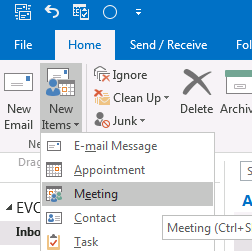
A meeting invitation (request) is usually sent by e-mail. An invitation organizer composes an appointment and send it to attendees via e-mail informing when this event will take place. Invitation recipients can decide whether to accept or decline this invitation.
No e-mail ivolved with ECO syncing meeting invitations between Outlook and cloud services
Usually, it requires an e-mail account to send out meeting request from Outlook. In case we do not have an e-mail account in Outlook, we can only sync meeting requests from cloud services to Outlook and treat them as appointments for reference purposes. In other words, meeting requests can only be created on the cloud or other client software or app.
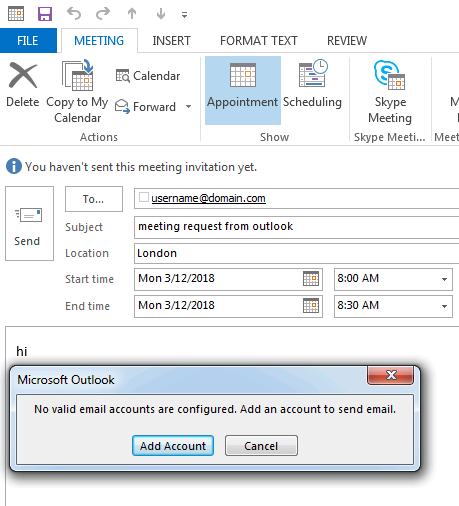
On Outlook calendar, entries will have a prefix of “Copy:” in front of meeting requests’ subject in order to differentiate from the cloud copy. To protect integrity of meeting request on the cloud, Outlook’s copy is in read-only mode that we cannot modify entries from Outlook. However, “Copy:” prefix does not apply to Outlook.com’s invitation. Users can still edit some fields of Outlook.com’s meeting invitation under Outlook and changes will be synchronized back to Outlook.com cloud.
How does meeting invitation work with between Outlook and cloud services?
There are several scenarios on how you can work with meeting invitation and Outlook via EVO Collaborator for Outlook:
Create meeting invitation in local Outlook
When a meeting invitation is created in Outlook, EVO Collaborator for Outlook will detect the entry creation and sync it to your cloud service. At this point, Outlook copy of meeting invitation will be primary while the cloud copy will turn into an appointment for your future reference. To differentiate difference between two copies, ECO will put a prefix of Copy: in front of subject of cloud copy.
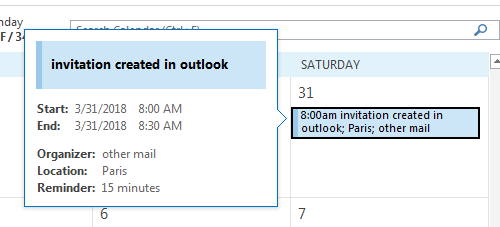

You can only modify Outlook copy and changes will be reflected to the cloud copy. Changes you made on cloud will not be synced to Outlook and only exist on the cloud. Also, as a rule of thumb, changes from Outlook copy will always override the cloud copy.
Create meeting invitation via incoming e-mail invitation
When a meeting invitation is delivered via e-mail in Outlook, Outlook will automatically create a meeting invitation on Outlook default calendar. Then, EVO Collaborator for Outlook will detect the entry creation and sync it to your cloud service. At this point, Outlook copy of meeting invitation will be primary while the cloud copy will turn into an appointment for your future reference. To differentiate difference between two copies, ECO will put a prefix of Copy: in front of subject of the cloud copy.


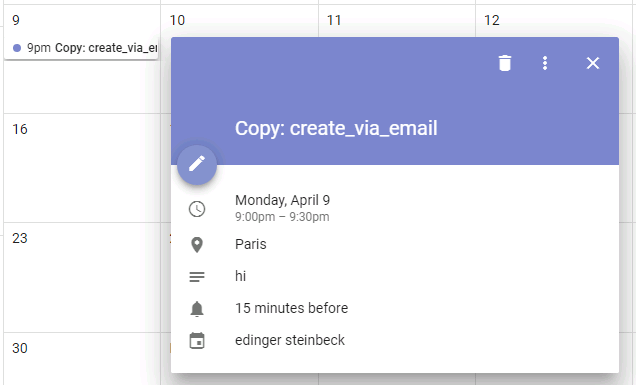
You can only modify Outlook copy and changes will be reflected to the cloud copy. Changes you made on cloud will not be synced to Outlook and only exist on the cloud. Also, as a rule of thumb, changes from Outlook copy will always override the cloud copy.
Create meeting invitation via incoming e-mail invitation (Receiving both <Gmail and Google Calendar> on Outlook)
This is a variation from the last scenario, where you use mail and calendar service that belong to the same vendor, such as Google. When a meeting invitation comes in via e-mail, both Google Calendar and Outlook’s local calendar will create the same meeting invitation of their own. Once EVO Collaborator for Outlook synchronizes, Outlook calendar will have two versions of the same invitation. One is Outlook own copy of the meeting invitation for reference. Another one with Copy: prefix turns into an appointment responsible for reflecting changes that you make on Google Calendar along with synchronization.
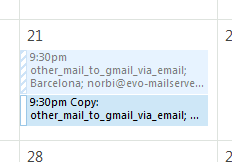
On the other hand, Google Calendar will only have one entry. Editing the entry on Google Calendar will reflect changes on Copy:subject entry in Outlook.
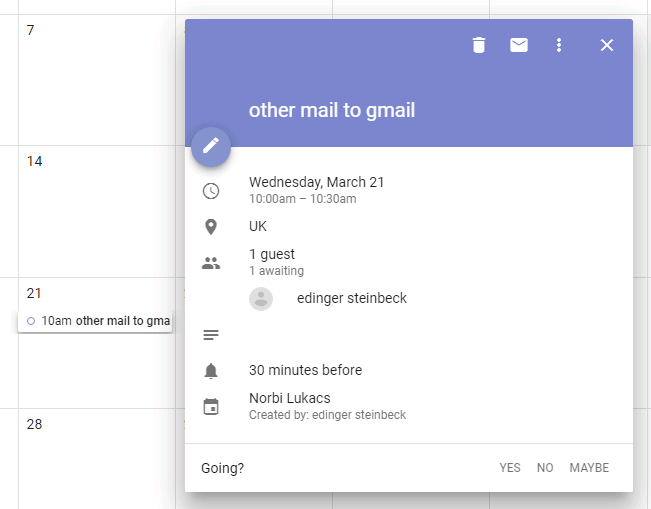
Create meeting invitation on the cloud/other calendar client
When a meeting invitation is created on cloud service by any mean, i.e. manually creating on web UI or syncing from other device/software, upon a regular syncing routine, EVO Collaborator for Outlook will detect the entry creation on cloud and sync it to Outlook’s designated calendar. At this point, the cloud copy of meeting invitation will be primary while Outlook copy will turn into an appointment for your future reference. To differentiate difference between two copies, ECO will put a prefix of Copy: in front of subject of Outlook copy.

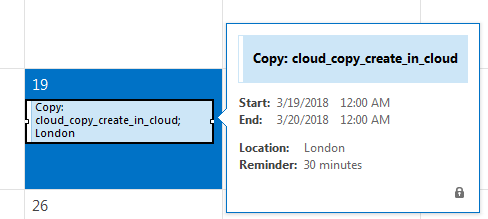
You can only modify the cloud copy and changes will be reflected to the Outlook copy. Changes you made in Outlook will not be synced to the cloud and only exist in Outlook. Also, as a rule of thumb, changes from the cloud copy will always override the Outlook copy.
Achieving better syncing result
Unlike what EVO Collaborator for Outlook used to treat meeting invitations before, the new strategies avoid meeting invitations on both ends from messing up. The reason is that when users create entries on the cloud, they are more likely to maintain them on web-UI or their own software/devices. Likewise, when users create entries on Outlook, they are more likely to maintain them on Outlook. Making copies of meeting invitations on the other side of synchronization can serve as a reference. The same rules work for recurring entries as well as entries with different time zones. Should you have any further complication upon syncing meeting invitations, please contact [email protected] and our staff will help you through as soon as possible.
